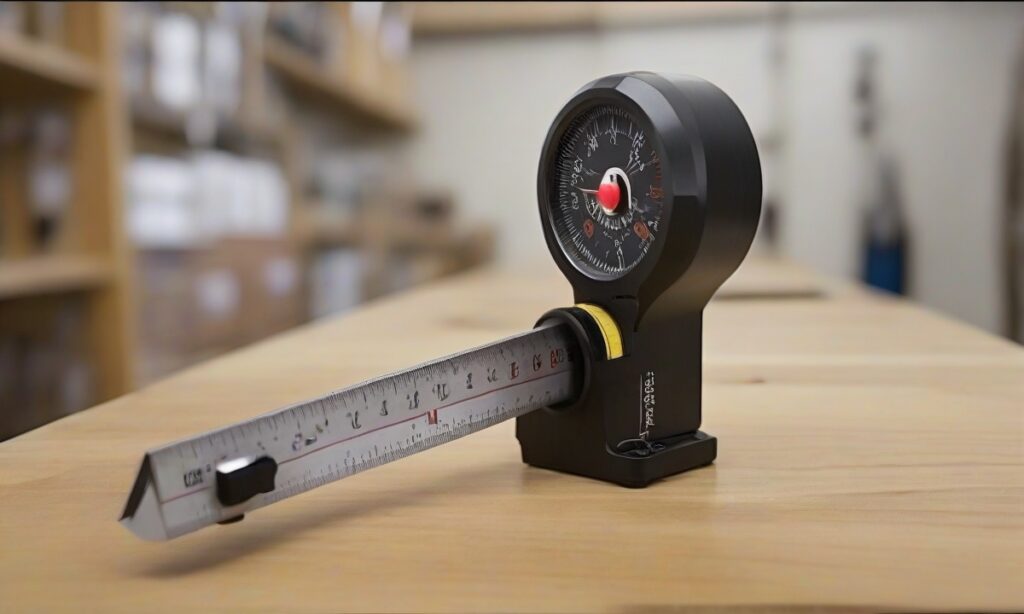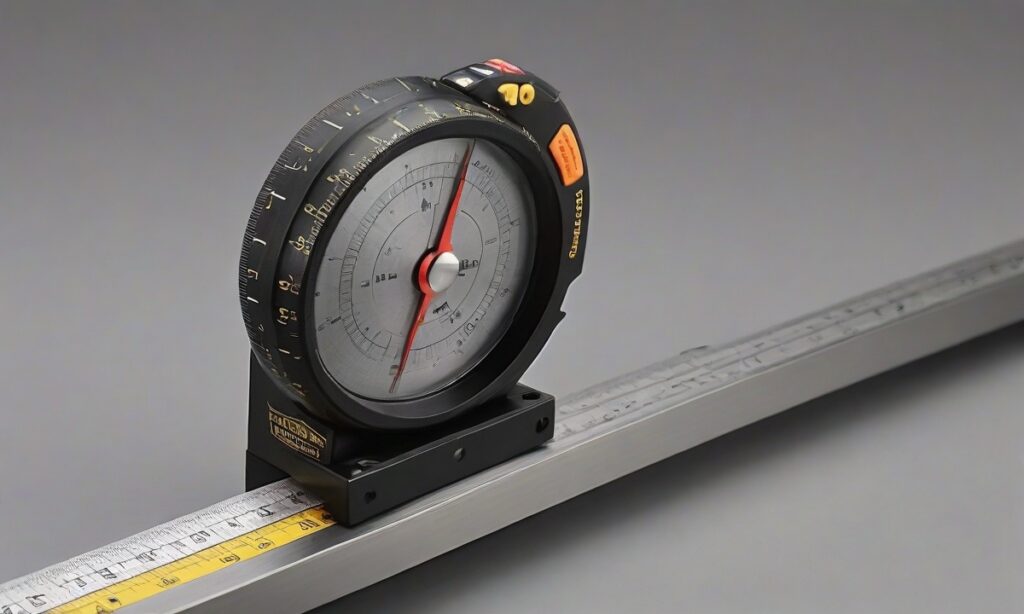Best Angle Finder Measuring Tools for Accuracy
2023.12.17 / By admin

Accuracy in measuring angles is of utmost importance, whether you are an experienced carpenter, metalworker or DIY enthusiast. Angle finder measuring tools are perfect tools for this, providing reliable and accurate angle measurements every time! Here we explore some of the top angle finder measuring tools currently available – traditional protractors to digital angle finders are all covered here so let’s go ahead and find one to meet all your angle measurement needs!
Understanding Angle Measurement
Accurate angle measurement is of vital importance in many applications such as carpentry, construction, metalworking, and more – this is why angle measurement tools and devices play a critical role in producing precise and reliable results
An improper measuring tool or lack thereof could result in costly mistakes and inaccuracies in finished products, so understanding angle measurement and selecting an accurate measuring instrument are both key for projects requiring precise angles.
Angle measuring devices come in many different forms and sizes, offering various features that make them applicable to various industries. Their variety may seem endless but each tool serves a purposeful role.
Angle measuring tools come in all forms and use manual protractors, digital displays, and advanced features to achieve desired results with precision and ensure precision for both professional and hobbyist products. These tools enable professionals and hobbyists to achieve their desired outcomes and ensure the precision of products produced.
Now that you understand the significance of accurate angle measurements and why angle-measuring devices are essential, let’s examine some of the more popular types of angle finders available on the market.
Types of Angle Finders
There is an assortment of angle finders designed to meet individual needs and preferences when measuring angles. Below are the most frequently utilized models:
Traditional Protractors | Scientific Models (SP). Incorporating a flat base and rotating arm, traditional protractors offer simple but effective tools for measuring angles manually. Ideal for educational settings as well as smaller-scale projects, traditional protractors provide accurate angle measurements quickly and conveniently.
Digital Angle Finders Whilst these high-tech devices display measurements accurately, digital angle finders provide precise and convenient measurements suited for professionals or enthusiasts who demand accuracy in their projects.
Miter Saw Angle Finders
Miter saw angle finders are designed to measure angles accurately, making it easier to make precise cuts. These angle finders are a favorite among woodworkers and DIY enthusiasts alike.
Inclinometers
Inclinometers are specialized angle finders that use gravity and other principles to measure angles. These tools are often used in geology, surveying, and civil engineering to measure the slope of the land and help make accurate measurements.
Choosing the right angle finder tool is essential for accurate results. Each type of angle finder has its own benefits and specific use cases, so it’s worth considering which one is best for your needs.
Traditional Protractors
Used for centuries, traditional protractors continue to be a popular choice for measuring angles manually. These straightforward yet reliable tools are widely used in educational settings and for small-scale projects.
To measure an angle using a protractor, place the protractor base on one end of the angle and align the protractor blade with the other end. Then, read the measurement on the protractor scale where the blade crosses it. Traditional protractors come in circular or semicircular shapes and can measure angles up to 180 degrees.
With their simplicity and affordability, protractors remain a valuable tool in any measurement toolkit. They are ideal for quick measurements and provide a low-tech alternative to advanced angle measurement devices.
Digital Angle Finders
When it comes to angle measurement tools, digital angle finders are a popular choice for professionals and DIY enthusiasts alike. These devices use advanced technology to provide accurate and reliable measurements, making them indispensable for various projects that require high levels of accuracy.
The digital display of these angle finders ensures more precise readings compared to traditional protractors. They also come with extra features and functionalities, such as the ability to save and transfer data, making them versatile tools that enhance the efficiency of your workflow.
Whether you’re a carpenter, metalworker or DIY enthusiast, a high-quality digital angle finder is a must-have. Not only is it an investment that pays off in the long run, but it is also a tool that makes your work easier and more precise.
Features to Consider when Choosing an Angle Finder
Angle measurement is a critical aspect of many projects, and the right tool can make all the difference. When selecting an angle finder, keep in mind a few essential features that will ensure accurate and efficient measurements.
Measurement Range
The measurement range is a crucial factor to consider when choosing an angle finder. Ensure that the tool’s measuring range is suitable for your particular project and provides the accuracy that you require.
Accuracy
Of course, one of the essential features of an angle finder is accuracy. Consider a tool with high accuracy for reliable measurement results.
Ease of Use
The ease of use is also critical for an angle measuring instrument, especially if you’re using it for prolonged periods. Make sure to choose a tool that is user-friendly and does not cause any physical strain during use.
Durability
A durable angle finder should be a top priority, as this type of tool may be exposed to harsh conditions on the job site. Choose an angle finder that is not only accurate but also built to withstand daily wear and tear.
Additional Functions
Finally, consider the additional functions that an angle finder offers. Memory storage and data transfer capabilities can be beneficial for automated tasks and keeping track of measurements. Check for these extra features but don’t overpay for options you won’t use.
Overall, when selecting an angle finder measuring tool, consider the above factors and choose the right tool for your particular application. A well-chosen tool will save you time and effort while ensuring the accuracy that you need.
Top Angle Finder Measuring Tools for Professionals
When it comes to professional angle measurement needs, accuracy and durability are crucial. Here are some of the best angle finder measuring tools on the market:
Bosch GAM 220 MF Digital Angle Finder
This tool offers high accuracy, a large backlit display, and a versatile design for measuring angles in various positions. It also has memory storage and data transfer capabilities, making it ideal for professionals who need to document their measurements.
Wixey WR300 Type 2 Digital Angle Gauge
This compact and portable tool offers excellent accuracy and ease of use. It features a magnetic base for easy attachment to metal surfaces and can measure angles in both degrees and percentage. The device also has a zero function for calibrating to a reference surface.
Digital Protractor by iGaging
This versatile tool can measure angles and inclinations up to 360 degrees in four different units of measurement. It features a large LCD display and a hold function for locking the measurement on the screen. The tool is compact and durable, making it suitable for outdoor use as well.
These top-tier angle finder measuring tools are sure to enhance accuracy and efficiency for professionals in various industries.
Angle Finders for DIY Enthusiasts
If you’re a DIY enthusiast or hobbyist, you don’t need to invest in expensive angle finder measuring tools. There are budget-friendly options available that are suitable for occasional use.
1. Digital Angle Gauge
A digital angle gauge is a great option for those on a tight budget. It features a digital display that shows the angle measurement, allowing you to be precise in your work. Some models are magnetized, making it easy to attach to the surface you’re working on.
2. Protractor
A protractor is a simple yet effective tool that can be used for measuring angles. Made from durable plastic or metal, it is ideal for small-scale projects. With accurate readings, a protractor is perfect for DIY enthusiasts who need a reliable tool without breaking the bank.
3. Angle Finder Ruler
If you’re looking for a versatile tool that can measure both angles and lengths, consider an angle finder ruler. It’s made of durable materials that can withstand rough handling, making it an excellent choice for DIY enthusiasts working on projects that require high precision.
Tip: Whichever tool you choose, it’s essential to read the instructions carefully and use it correctly to achieve accurate results.
With these angle measuring devices, you can tackle your DIY projects with confidence and precision, without draining your wallet.
Specialty Angle Finders

While traditional protractors and digital angle finders can cover most angle measurement needs, there are certain industries and specialized projects that require specific angle finder measuring tools. Let’s explore some specialty angle finders designed for unique applications:
Woodworking Angle Finders
For woodworkers, precise angle measurement is critical to ensure accurate cuts and joints. Specialty woodworking angle finders come in various shapes and sizes, from compact digital models to more traditional protractor-style tools. Popular woodworking angle finders include the Wixey WR365, the iGaging AngleCube, and the Mitutoyo 187-901.
Metalworking Angle Finders
Similar to woodworking, metalworking requires precise angle measurement to ensure accurate fabrication and welding. Specialty metalworking angle finders often have magnetic bases or V-groove designs to make them easier to use on metal surfaces. Popular metalworking angle finders include the GemRed Digital Protractor, the Fowler Full Warranty Stainless Steel Protractor, and the Starrett 505P-7 ProSite Protractor.
Automotive Angle Finders
For automotive enthusiasts and mechanics, accurately measuring angles is critical in various applications, from wheel alignment to engine building. Specialty automotive angle finders often have unique features, such as magnetic bases, digital displays, and flexible arms for easy access to tight spaces. Popular automotive angle finders include the SmartTool Digital Protractor, the CTA Tools 4215 Angle Finder, and the Angle Finder & Level from Eastwood.
Other Specialty Angle Finders
There are many other specialty angle finders available for various applications, such as masonry, surveying, and more. For example, the Empire Level 2791 Magnetic T-Bevel is ideal for tile and stonework, while the Topcon SitePro Digital Protractor is designed for surveying and construction applications.
When choosing a specialty angle finder, consider the specific needs of your project and select a tool that offers the necessary features and functions. With the right specialty angle finder, you can achieve accurate results in even the most challenging applications.
Tips for Using Angle Finder Measuring Tools
Angle measuring instruments are precise tools that can help you achieve accurate measurements for your projects. To ensure the best results, here are some tips to keep in mind when using your angle finder tool:
1. Calibrate your tool regularly
Calibrating your angle finder tool on a regular basis is essential to ensure accuracy. This is especially important for digital angle finders, which may require more frequent calibration than traditional protractors. Follow the manufacturer’s instructions to calibrate your tool correctly.
2. Use the right measurement mode
Most angle finder measuring tools offer various measurement modes, such as degree, slope, and pitch. Make sure you’re using the correct mode for your specific project, as using the wrong mode can result in incorrect measurements.
3. Position your tool correctly
The position of your angle finder tool can affect the accuracy of your measurements. Make sure your tool is level and placed securely against the surface you’re measuring. If your tool has a built-in magnetic base, ensure you’re using it to hold the tool in place.
4. Avoid excessive force
When taking measurements with your angle finder tool, avoid applying excessive force or pressure to your tool. This can result in inaccurate measurements or even damage to the tool itself.
5. Take multiple measurements
For the most accurate results, it’s best to take multiple measurements and calculate the average. This can help to eliminate any outliers or errors in your measurements.
By following these tips, you can ensure that your angle finder measuring tool performs at its best and helps you achieve precise and reliable measurements for all your projects.
Maintenance and Care for Angle Finders
Your angle finder measuring tool is a valuable investment that requires proper care to perform at its best. Here are some tips to help maintain your angle measuring instruments:
Clean Regularly
Keep your angle finder clean after every use to prevent dust, debris, or other materials from interfering with its accuracy. Use a soft cloth or brush to wipe off any dirt or grime that accumulates on the surface of the tool.
Calibrate Periodically
To ensure accurate measurements, it’s important to calibrate your angle finder periodically. Follow the manufacturer’s guidelines to calibrate the tool, as it may vary depending on the type or brand of angle finder you are using.
Store Properly
When not in use, store your angle finder in a dry, cool, and secure location to avoid any damage. Avoid exposing the tool to extreme temperatures or moisture, as this can affect its functionality and lifespan.
Replace Batteries
If your angle finder requires batteries, make sure to replace them regularly and dispose of old batteries properly. Check the manufacturer’s instructions for guidance on which type of batteries your tool requires.
Following these maintenance tips can help your angle finder measuring tool last longer and maintain its accuracy over time.
Conclusion
Accuracy is crucial in projects that involve angle measurement. The right angle finder measuring tool can make all the difference, providing reliable and precise measurements for your specific needs. Fortunately, there are many options available in the market, from traditional protractors to advanced digital devices.
When selecting an angle finder, consider your requirements, such as measurement range, accuracy, ease of use, durability, and additional functions. Furthermore, proper maintenance and care can extend the lifespan of your angle finder and ensure optimal performance.
Whether you are a professional or a DIY enthusiast, having the right angle finder in your toolkit can save time, reduce errors, and produce better results. So choose wisely and enjoy the convenience and accuracy that these tools bring to your work.
FAQ
What is an angle finder?
An angle finder is a measuring tool used to determine the angle between two lines or surfaces. It helps ensure accurate and precise measurements in various projects.
How does an angle finder work?
Angle finders typically have a pivoting arm or a digital sensor that can be moved or adjusted to align with the lines or surfaces being measured. The tool then provides a reading or measurement of the angle.
What are the benefits of using an angle finder?
Using an angle finder offers several benefits, including enhanced accuracy, time-saving measurements, improved project outcomes, and reduced errors or miscalculations.
What are the different types of angle finders available?
There are various types of angle finders available, including traditional protractors, digital angle finders, and specialty angle finders designed for specific applications.
Can angle finders be used for both small-scale and large-scale projects?
Yes, angle finders can be used for both small-scale and large-scale projects. From simple DIY tasks to complex construction or metalworking projects, angle finders provide accurate measurements for a range of applications.
Are digital angle finders more accurate than traditional protractors?
Digital angle finders are generally considered more accurate because they provide precise digital readings. However, traditional protractors can still offer reliable measurements, especially for simpler projects or educational purposes.
What features should I consider when choosing an angle finder?
Key features to consider when choosing an angle finder include measurement range, accuracy, ease of use, durability, additional functions like memory storage or data transfer capabilities, and compatibility with your specific project requirements.
Are there angle finder options available for budget-conscious DIY enthusiasts?
Yes, there are angle finder options available that cater to budget-conscious DIY enthusiasts. These tools offer essential angle measuring capabilities at a more affordable price point.
Can angle finders be used for specialized applications?
Yes, there are angle finders designed specifically for specialized applications such as woodworking, metal fabrication, automotive repair, and more. These specialty angle finders may have additional features or attachments to suit specific project needs.
What are some tips for using angle finder measuring tools effectively?
To use angle finder measuring tools effectively, ensure proper alignment, take multiple measurements for accuracy, understand the tool’s instructions, and practice using it before starting your project. Additionally, maintaining a stable work surface and using appropriate safety precautions is also important.
How should I maintain and care for my angle finder?
To maintain and care for your angle finder, regularly clean it with a mild detergent and soft cloth, avoid dropping or mishandling the tool, store it in a protective case or pouch, and periodically check and calibrate its accuracy following the manufacturer’s instructions.
Where can I purchase angle finder measuring tools?
Angle finder measuring tools can be purchased at hardware stores, home improvement centers, specialty tool retailers, and online platforms. It’s advisable to research and compare different brands and models to find the best tool for your needs.
